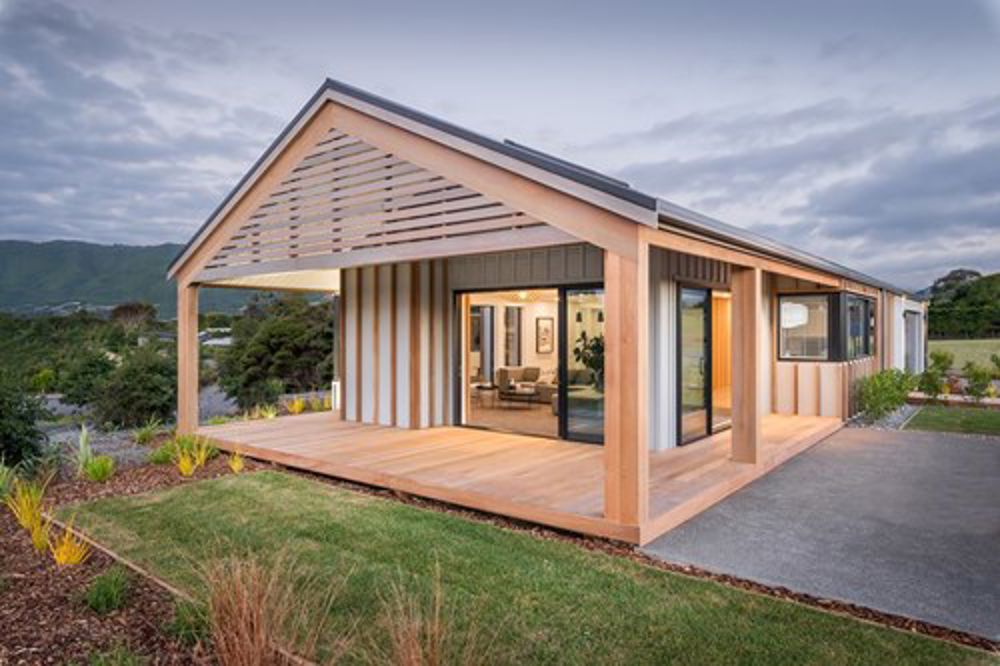-
Home Orientation and Joinery
Take advantage of the way your section faces, and your home’s orientation to the sun. Place living areas north-facing to optimise sunshine hours and keep your home warm and dry. Minimise windows on the southside to prevent unnecessary heat loss.
Consider the location and size of your windows, and also look at options for improving the thermal efficiency of your joinery. Options can include upgrading from standard double glazing to more efficient forms of glazing with “Low-E” treatment and inert gas-fill as well as upgraded frames with thermal breaks. Also, consider thermal drapes in your decorating plans as these contribute to retaining heat in the winter, and keeping the heat out in the summer.
Insulation
The NZ Building Code specifies minimum levels of insulation for new homes. For a little additional investment, it is possible to substantially upgrade the thermal envelope of your new home with thicker insulation, thereby achieving a higher “R Value” (An R-value is a rating which measures how well insulation can resist heat flow. ‘R’ stands for thermal resistance) resulting in a warmer home for you. This could include utilising thicker framing on external walls to enable higher levels of insulation to be used.
To increase insulation for the flooring in your new custom built home, consider insulating your concrete slab. The added advantage of reducing heat loss from thermal bridging around the perimeter of your slab, is paired with increasing the effectiveness of in-slab heating if being used.
Heating and Ventilation
Consider efficient forms of heating that are appropriate for the environment you are building in. These could include in-slab, radiators, centrally ducted, heat- pumps or modern wood fires.
Ventilation - ensure appropriate forms of mechanical ventilation are installed to ensure moisture is extracted from cooking and bathing activities, as well as providing sufficient air changes to effectively control moisture throughout the home.
Energy Management and Generation
The use of some form of home automation can enable efficient use of appliances and systems within your home enabling you to manage when certain appliances are operating and enabling you to effectively reduce the energy usage of your home with the added benefit of enabling remote control for certain features. We have systems available that can be installed for much less than you might think!
The installation of Photo-Voltaic (PV) solar panels has become more prevalent in recent years, and these systems have also become far more cost-effective. The most common installation is for “On-Grid” or “Grid-tied” systems, which utilises energy as it's generated, and sells any surplus back to the grid. There are multiple storage options available as well, which have the potential to reduce your homes peak energy demand for grid-supplied energy.
Water
There are a variety of water heating options in the market, with the most common being Electric, Heat Pump, Gas & Solar. Your local David Reid Homes franchisee can assist in specifying the most appropriate system for you and your intended usage of your new custom home.
Increase water efficiency and reduce waste by installing water-efficient appliances and fixtures, including toilets and low-flow showerheads. If appropriate for your area, consider greywater re-use and rainwater harvesting.
We hope these five areas for increasing efficiency in your new custom built home gives you some food for thought. Our teams of highly qualified master builders across New Zealand are always ready and willing to give you the advice and direction you need for increased efficiency. Stayed tuned for the third and final blog in this series, which covers landscaping recommendations for your new build.
Building an Efficient Home in New Zealand

Filed under:
- Build Advice
- Design and Advice
- Case Studies